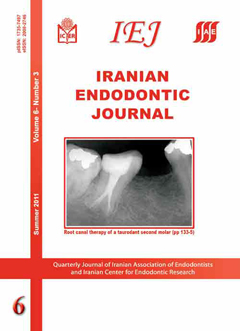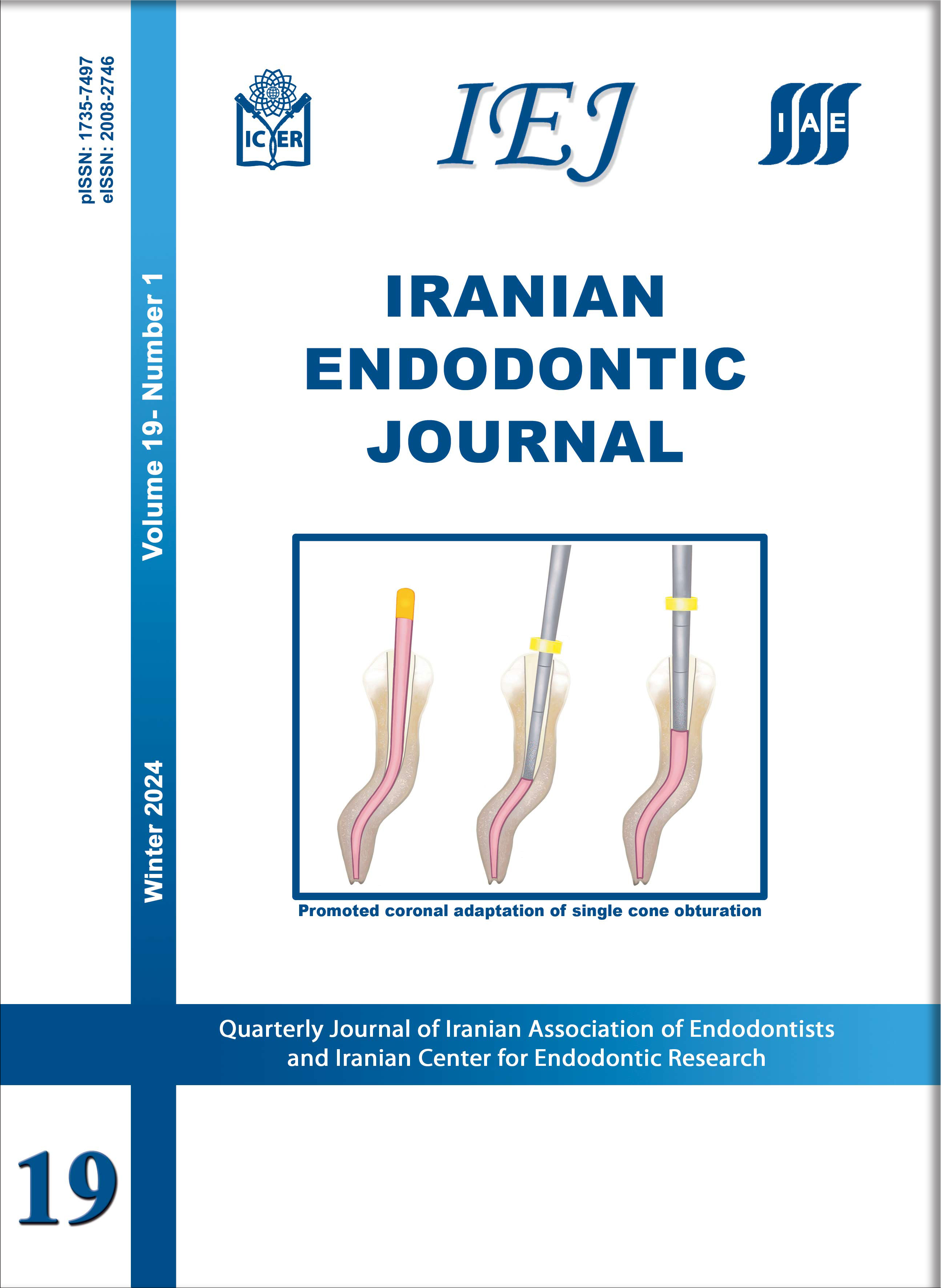Conventional versus digital radiographs accuracy in detecting artificial voids in root canal filling material
Iranian Endodontic Journal,
Vol. 6 No. 3 (2011),
18 June 2011,
Page 99-102
https://doi.org/10.22037/iej.v6i3.2248
INTRODUCTION: Inappropriate condensation of gutta-percha or improper use of sealer can lead to voids in root canal filling material and consequent failure of the treatment. Timely detection of voids within root canal filling may prevent complications. In this study, we compared the accuracy of digital and conventional radiograph for detecting voids within root canal fillings.
MATERIALS & METHODS: The root canals of 50 extracted maxillary permanent incisors were prepared and filled with gutta-percha and sealer. The teeth were then randomly divided into two groups of 25 incisors. The teeth were then imaged using the paralleling technique with E-speed film and digital/digital zoomed system. The accuracy of radiographic techniques was evaluated for detecting voids by three independent observers. Presence/absence of voids was recorded and compared with the baseline data. The sensitivity, specificity, accuracy and positive and negative predictive values was recorded.
RESULTS: The sensitivity, specificity and accuracy of conventional radiography and digital radiography were 48%, 52%, 50%, and 82.7%, 80% and 81.3%, respectively. The positive and negative predictive value of conventional radiography was 50%. Digital images showed the positive predictive value of 80.3% and negative predictive value of 83.5%. The values of positive and negative predictive were reported as 81.6% and 81.1% in digital zoomed images.
CONCLUSION: Digital and digital zoomed images performed better than conventional radiographs in detecting voids, but there were no differences between the performances of both digital images.



